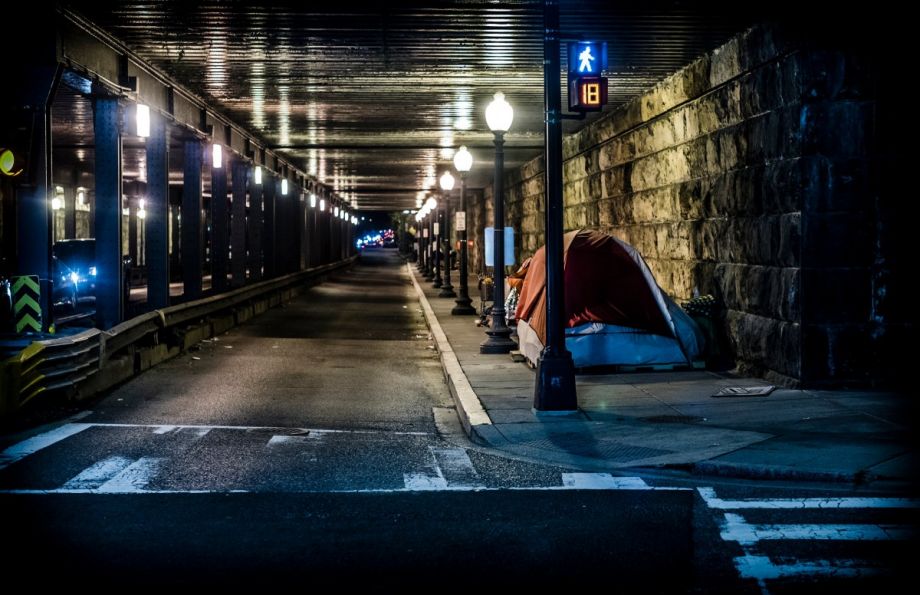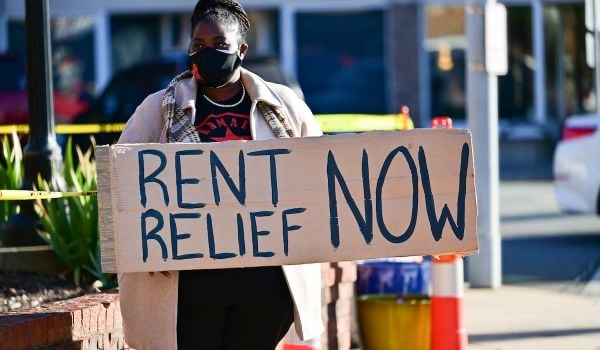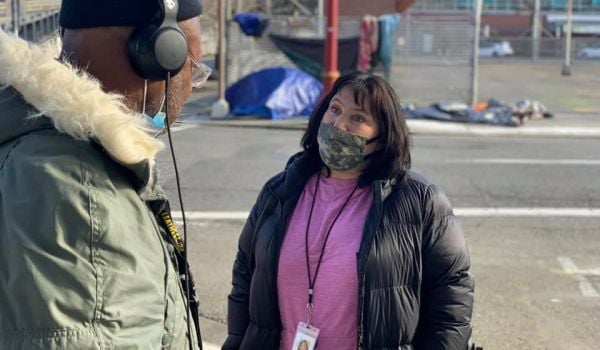There is a strong body of evidence on what works when it comes to resolving homelessness – housing – and what does not work – punitive policies like criminalization and homeless sweeps that move people around while discarding their belongings. So why do so many American cities seem vexed when it comes to this issue, constantly framing people who are unhoused as threats to public safety while simultaneously promising a compassionate approach?
A big reason for this is that complaint-driven policies of homelessness prevail in many cities despite being antithetical to resolving homelessness. Mayors and other political figures fear community blowback, and rather than focusing on the real problem – that people are experiencing homelessness – mayors instead adopt policies designed as a form of customer service to placate people who are housed and who do not wish to see unsheltered street homelessness.
These complaint-driven policies, centered around deploying police or sanitation workers to places where public encampments are reported, are oriented around “solving” the problem of visible, unsheltered homelessness and persistent encampments. The forced clearing of encampments — often referred to as “sweeps” — can lead to lost or discarded identification, clothing, medications or other critical belongings. It can disperse people further from their support network, including family who can check up on them or social workers familiar with their cases. It can also lead to arrest or confrontations with police that can exacerbate their houselessness long-term.
This type of policy is nominally connected to services, until unhoused people discover that the services — including permanent housing or social supports — don’t exist, were not what was promised, or come with curfews and other restrictions that cause them to return to the street in frustration. The end result is that homelessness persists, even grows, and that trust between people living on the street and the city governments purportedly offering them services erodes.
A new report from Boston University, Cornell and the nonprofit Community Solutions reveals the extent of punitive and complaint-driven policies within mayors’ offices and city governments across the country. Building on a 2021 survey of mayors and a previous report on the impact of zoning on homelessness, which found that housing policies are often disconnected from homelessness policies, the report’s authors looked at homeless outreach teams across the country, tracking what their goals and missions are and how they operate.
The report reveals that 76% of homeless outreach teams in the nation’s 100 largest cities involve the police. And 59% of the outreach teams studied are designed to enforce civil or criminal infractions. 43% of outreach teams state that their objective includes removing encampments. (This does not mean that only 43% of cities are removing encampments; many large cities task encampment removal to their departments of sanitation, police departments or other agencies.)
Building on information gleaned from a survey of mayors in 2021, the report states that 78% of mayors say police have some influence on their homelessness policy, meaning they had greater influence than public housing authorities and people at risk of becoming homeless themselves. 22% of mayors house their homelessness staff within police departments.
“The police are key players in homelessness policy-making. They influence policy choices and house city staff dedicated to homelessness outreach,” the report states. “This heavy policy involvement means that even those policies whose aims are supportive of unhoused people may in practice be highly punitive.”
The study looked at homeless outreach teams within city governments, leaving out nonprofit organizations that serve similar functions. While not all of these city outreach teams have punitive roles, many were designed to respond to complaints from housed residents upset about an encampment. Citizen complaints were one of the two primary mechanisms for interacting with people experiencing homelessness, according to the report. 41% of homeless outreach teams include addressing citizen complaints as a goal, the report says. 22% have websites or other channels for housed residents to report people who are unhoused.
In New York City, for instance, residents are directed to contact 311 to report homeless encampments, including tents, tarps or mattresses. The city’s 311 website says, “Officers from your local police precinct will respond within 4 hours.” Officially, the website says NYPD’s role is to assess the encampment and report it to the Department of Homeless Services, but encounters between police and homeless residents can often lead to arrest. (It’s also not clear why the NYPD would need to be first responders if their role is merely to report to another agency.)
While many homeless outreach teams do connect people with social services, this doesn’t preclude their cooperation with police. “Unfortunately, service provision, punitive policing, and crisis management often go together. HOTs frequently focus on offering social and medical services to unhoused persons prior to enforcing civil or criminal penalties,” the report says.
As an example, the report points out that San Francisco’s Homeless Outreach Team (called SFHOT) describes its strategy as “engagement and enforcement (as a last resort) to respond to criminal issues.” San Francisco’s punitive approach to homelessness was also criticized in a 2021 report from the Coalition on Homelessness. That report found that to carry out its stated intentions of prioritizing public health and connecting unhoused people with solutions, “the City would have to adopt equitable distribution of scarce shelter resources based on need, rather than complaint or nuisance. The City would also have to recognize that every individual has a right to self-determination: that different people require different types of resources, and that connecting the right people with the right resources requires time, care and intensive outreach.”
But the Coalition found that, contrary to its stated intentions, the city was discarding belongings and initiating homeless sweeps even when shelter space was not available. These practices eventually led to a lawsuit that barred the city from conducting sweeps.
Charley Willison, one of the authors of the report on punitive approaches to homelessness, says homeless outreach teams’ ties to police often impact whether they have enforcement goals. “The overwhelming majority do have these broad-ranging enforcement goals of civil and criminal penalties,” says Willison, who studies how urban politics affects public health and homelessness policies.
Willison says data gleaned in the 2021 survey of mayors shows that some of the most unhelpful and punitive policies inflicted against people experiencing homelessness are the result of coordinated groups of angry housed neighbors. “A politician feels this pressure, they feel very strongly held accountable, they feel they have little control over it,” Willison says. The 2021 survey, which I wrote about last year, led researchers to conclude that mayors relied on policing as an immediate political solution because they had more control over the police force than they did over housing.
The use of police can decrease trust between unhoused residents and governments, so that if and when housing is available, many are reluctant to engage. Police interactions can also lead to arrests and convictions, and many landlords don’t accept prospective tenants with criminal records. This makes it more difficult to get housing and leads to what’s referred to as the prison-to-homelessness pipeline.
But organized groups of angry neighbors, who form neighborhood associations or protest at community board meetings and call for more punitive policies, are hard for elected officials to ignore.
”The mayor’s not going to just ignore complaints to the mayor’s office, there’s not really any way around that,” says Steve Berg, chief policy officer with the National Alliance to End Homelessness.
Complaint-driven policies can lead to rushed timelines, whereas connecting people with permanent housing, if it is available, can require waits longer than housed neighbors are comfortable with. Berg says that in some of the cities where mayors have had more success in reducing unsheltered homelessness, like Houston, mayors had to undertake a less immediately gratifying process, but the public came around.
“Even though it takes time and it’s slower than anyone would want, they have a clear strategy,” Berg says. While most people on the street want to be housed, permanent housing for people experiencing homelessness is a scarce resource.
The divisions that come from complaint-driven policies can be seen in Los Angeles, where Mayor Karen Bass launched an encampment clearing program called “Inside Safe” in December. Bass had set up the arbitrary goal of bringing 17,000 unsheltered homeless residents into housing within her first year as mayor, leading her to clear some encampments before housing and motel rooms were secured. (The program is intended to put people into long-term motel rooms until they can be connected to permanent housing.)
Some encampment residents were put off by the program’s miscommunication and shifting promises as well as the heavy use of police. Bass claimed on June 13 to have already brought in 14,000 people, including 1,300 through Inside Safe, which would put her on track for her goal, but the program has been opaque and the administration has not turned in crucial transparency documents. Only a small percentage of people have been permanently housed.
Bass’ approach, while criticized, was at least in stated intent meant to be less punitive than that of the previous mayor and that of some anti-homeless council members. Before Bass took office, the city passed a controversial ordinance referred to as “41.18” after its title in the municipal code that allows the city council to designate some areas as sensitive locations and call in encampment sweeps. Residents took to calling their councilmembers to get locations designated and encampments swept.
Not everyone agrees with the report’s assessment that most local homelessness outreach involves the police. Donald Whitehead Jr., who is formerly homeless and is the executive director of the National Coalition for the Homeless, says that in his experience working with homeless outreach teams, they are not very police-involved.
“I was surprised that there are so many outreach teams that are parts of law enforcement, none of the ones that I’ve worked with in my career have any relationship with law enforcement,” Whitehead Jr. says. He says that he has worked with homeless outreach teams in Baltimore, Cincinnati, Orlando, Washington D.C. and Alexandria, Virginia. He adds that not all of the outreach teams were government-led and some were nonprofits, which the study did not look at.
But Whitehead Jr. agrees that avoiding police presence is for the best. “The involvement of law enforcement has a negative impact on people’s ability to end their homelessness,” he says.
A combination of punitive policies and failed promises to provide housing have led unhoused people to fight for their own self-determination and for clearer, more legally-binding promises, something cities are hesitant to provide. In March, a homeless encampment in Sacramento signed a deal with the city stating that every resident could stay in the encampment until they secured permanent housing.
The agreement points to a problem underlying a lot of homeless outreach: There is often no path to permanent housing, and people who are unhoused and may have cycled through various social services are very aware of this. People who are adamantly opposed to living in a shelter – often for very good reason – are sometimes dubbed “service-resistant” by city leaders. But the services they are resisting either don’t exist or do not meet their real needs.
Whitehead Jr. stresses that outreach on its own won’t resolve homelessness if there’s no housing available. “There has to be a resolution at the end,” Whitehead Jr. says. While this may lead some cities to throw up their hands and claim they can’t afford to build housing quickly, research shows that permanent supportive housing saves money in the long run compared to the cycle of emergency room visits and incarceration that often occurs during homelessness.
Whitehead Jr. says outreach was more successful during Covid’s early months during a period when many cities were offering people single-room motel stays, as people experiencing homelessness seem to prefer these to crowded congregate-style homeless shelters. While the cost of these motels was reimbursed by FEMA, some cities have looked to other funds to secure motel rooms or build more permanent housing.
Elected officials who want to please all of their constituents often say that housed residents and unhoused residents want the same thing - for people to have resources and come inside. But it’s not true that everyone’s interests are aligned. Due to either misinformation or misplaced rage, many anti-homeless voices want quick fixes, punishment and a system designed to react to their distress at having to witness homelessness. This approach extends homelessness and causes public anger to grow, helping no one.
The only way to address homelessness is to work together with unhoused people, honor their self-determination and make clearly-defined commitments with housing at the end. That may take more time, but so does any relationship built on trust.
This story was co-published in collaboration with Shelterforce, the only independent, non-academic publication covering the worlds of affordable housing, community development and housing justice.
This article is part of Backyard, a newsletter exploring scalable solutions to make housing fairer, more affordable and more environmentally sustainable. Subscribe to our weekly Backyard newsletter.

Roshan Abraham is Next City's housing correspondent and a former Equitable Cities fellow. He is based in Queens. Follow him on Twitter at @roshantone.

















